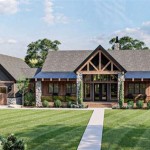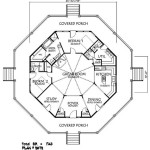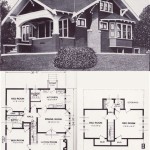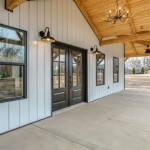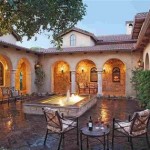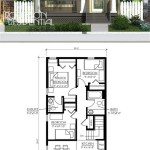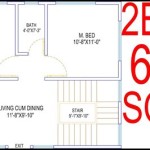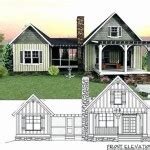Bird house building plans are detailed instructions and diagrams that guide individuals in constructing nesting boxes for birds. These plans provide step-by-step guidance on materials selection, measurements, cutting techniques, and assembly procedures. Bird enthusiasts, wildlife rehabilitators, and homeowners often use these plans to create safe and suitable nesting environments for various bird species.
Bird house plans are crucial for ensuring the success and longevity of bird populations. By providing birds with nesting sites, these plans contribute to their reproductive success, protection from predators, and shelter from harsh weather conditions. Properly designed bird houses can also encourage birds to nest in specific locations, facilitating birdwatching and monitoring efforts.
In the following sections, we will delve into the key considerations, materials, and techniques involved in using bird house build plans. We will explore different types of bird houses, their specific requirements, and how to choose the most appropriate plans for your needs.
Consider these nine key points when working with bird house build plans:
- Choose appropriate species
- Select durable materials
- Provide proper drainage
- Ensure adequate ventilation
- Avoid using treated lumber
- Install at correct height
- Orient entrance away from wind
- Clean regularly to prevent mites
- Monitor usage and make adjustments
By following these guidelines, you can create a safe and welcoming nesting environment for birds in your backyard or other suitable locations.
Choose appropriate species
The first step in using bird house build plans is to choose the appropriate species of bird you wish to attract. Different bird species have specific nesting requirements, such as the size of the house, the shape of the entrance hole, and the height at which the house should be placed. Researching the nesting preferences of the birds in your area will help you select the most suitable plans.
- Consider the size of the bird: Smaller birds, such as chickadees and wrens, require smaller bird houses, while larger birds, such as bluebirds and woodpeckers, need larger houses.
- Pay attention to the shape of the entrance hole: The size and shape of the entrance hole determine which birds can access the house. For example, houses with small, round holes are suitable for chickadees, while houses with larger, oval holes are more appropriate for bluebirds.
- Choose the right height for the house: Different bird species prefer to nest at different heights. For instance, chickadees prefer houses placed 5-8 feet above the ground, while bluebirds prefer houses placed 4-6 feet above the ground.
- Consider the nesting material: Some bird species, such as bluebirds, prefer houses with nesting material already provided. You can line the house with soft materials like wood shavings or straw.
By selecting bird house build plans that are tailored to the specific needs of the bird species you wish to attract, you increase the chances of successful nesting and occupation.
Select durable materials
When selecting materials for your bird house, durability is of utmost importance. The materials you choose will determine the longevity and functionality of the house, ensuring it provides a safe and comfortable nesting environment for birds year after year.
The most suitable materials for bird houses are naturally resistant to rot and moisture damage. Cedar, redwood, and cypress are excellent choices due to their natural resistance to decay and insects. These woods are also relatively lightweight, making them easy to work with and install.
If you are unable to obtain rot-resistant lumber, you can use pressure-treated pine. However, it is crucial to ensure that the wood is labeled for outdoor use and has been treated with a water-repellent preservative. Avoid using treated lumber that contains chromated copper arsenate (CCA), as this chemical can be harmful to birds.
In addition to the wood used for the exterior of the bird house, the materials you choose for the interior are equally important. Avoid using materials that can absorb moisture, such as carpet or fabric. Instead, opt for materials like wood shavings, straw, or bark. These materials provide insulation and drainage, creating a comfortable and dry nesting environment for the birds.
By selecting durable materials and constructing the bird house properly, you can create a long-lasting home for your feathered friends.
Provide proper drainage
Ensuring proper drainage in a bird house is essential for the health and well-being of its occupants. Moisture can accumulate inside the house due to rain, condensation, or bird droppings, creating a damp and unhealthy environment that can lead to mold growth and disease. Proper drainage allows water to escape from the house, keeping it dry and comfortable for the birds.
To provide proper drainage, incorporate drainage holes in the floor of the bird house. These holes should be approximately 1/4 inch in diameter and spaced evenly across the floor. The holes allow water to drain out of the house, preventing it from pooling and causing problems.
In addition to drainage holes, ensure that the roof of the bird house overhangs the sides by at least 2 inches. This overhang helps to prevent water from dripping directly into the entrance hole or seeping into the house through the seams.
Avoid using materials that absorb moisture, such as carpet or fabric, inside the bird house. Instead, opt for materials like wood shavings, straw, or bark, which allow water to drain through and provide insulation.
By providing proper drainage in your bird house, you create a healthy and comfortable environment for nesting birds, increasing their chances of successful breeding and raising their young.
Ensure adequate ventilation
Adequate ventilation is crucial for the health and well-being of birds nesting in a bird house. Proper ventilation allows fresh air to circulate throughout the house, removing moisture, reducing the risk of mold growth, and preventing the buildup of harmful gases.
- Provide ventilation holes: Incorporate ventilation holes near the top of the bird house, opposite the entrance hole. These holes should be approximately 1/2 inch in diameter and spaced evenly around the top of the house. The ventilation holes allow warm, moist air to escape, creating a healthier environment for the birds.
- Avoid blocking ventilation: Ensure that the ventilation holes are not obstructed by nesting material or other debris. Regularly check the house and remove any obstructions to maintain proper airflow.
- Consider using a vented bird house design: Some bird house designs incorporate built-in ventilation features, such as screened vents or perforated panels. These designs provide excellent ventilation while protecting the birds from predators and the elements.
- Avoid overcrowding: Overcrowding in a bird house can restrict airflow and create an unhealthy environment. Ensure that the bird house is the appropriate size for the species of bird you are trying to attract and that it is not occupied by too many birds.
By providing adequate ventilation in your bird house, you create a healthy and comfortable environment for nesting birds, increasing their chances of successful breeding and raising their young.
Avoid using treated lumber
When selecting materials for your bird house, it is crucial to avoid using treated lumber. Treated lumber is wood that has been chemically treated to resist rot and decay. While this treatment may be beneficial for outdoor structures like decks and fences, it can be harmful to birds.
The chemicals used to treat lumber, such as chromated copper arsenate (CCA) and alkaline copper quaternary (ACQ), are toxic to birds. These chemicals can leach out of the wood and contaminate the nesting material, which can then be ingested by the birds or their young. Ingestion of these chemicals can cause a range of health problems in birds, including liver damage, reproductive problems, and even death.
In addition to the direct health risks to birds, treated lumber can also make bird houses less attractive to nesting birds. The smell of the chemicals can be off-putting to birds, and the chemicals can also alter the taste of the wood, making it less palatable to nesting birds.
For all of these reasons, it is best to avoid using treated lumber when building bird houses. Instead, opt for untreated wood that is naturally resistant to rot and decay, such as cedar, redwood, or cypress.
If you are unable to obtain untreated wood, you can use pressure-treated pine that is labeled for outdoor use and has been treated with a water-repellent preservative. However, it is important to note that even pressure-treated pine may contain low levels of toxic chemicals, so it is still best to avoid using it if possible.
Install at correct height
The height at which you install a bird house is crucial for its success. Different bird species prefer to nest at different heights, and installing the house at the correct height increases the chances of it being occupied.
Generally, smaller bird species, such as chickadees and wrens, prefer to nest in houses that are placed higher up, between 5 and 8 feet above the ground. This height provides them with a good view of their surroundings and helps to protect them from predators.
Larger bird species, such as bluebirds and woodpeckers, prefer to nest in houses that are placed lower down, between 4 and 6 feet above the ground. This height provides them with easy access to their nesting site and makes it easier for them to feed their young.
In addition to the height of the house, the placement of the house is also important. Avoid placing the house in an open area where it is exposed to the elements and predators. Instead, choose a location that is sheltered from the wind and rain and that is not easily accessible to predators.
By installing the bird house at the correct height and in a suitable location, you can increase the chances of it being occupied by nesting birds and provide them with a safe and comfortable home.
Orient entrance away from wind
The orientation of the bird house entrance is an important consideration to ensure the comfort and safety of its avian occupants. Positioning the entrance away from the prevailing wind direction provides several benefits:
- Protection from the elements: When the entrance is facing away from the wind, it helps to keep the interior of the bird house dry and sheltered. Strong winds can drive rain and snow into the house, which can make it uncomfortable and even dangerous for the birds.
- Reduced heat loss: During cold weather, wind can steal heat from the bird house, making it difficult for the birds to stay warm. By orienting the entrance away from the wind, you can help to reduce heat loss and keep the birds comfortable.
- Increased protection from predators: Many predators, such as cats and snakes, rely on their sense of smell to locate prey. By orienting the entrance away from the wind, you can help to reduce the chances of predators being able to detect the birds inside the house.
- Improved visibility for birds: When the entrance is facing away from the wind, it provides the birds with a clear view of their surroundings. This allows them to easily spot potential predators and escape if necessary.
By orienting the entrance of the bird house away from the wind, you can create a more comfortable, safe, and secure environment for the birds that choose to nest inside.
Clean regularly to prevent mites
Regular cleaning of bird houses is crucial for preventing infestations of mites and other parasites. Mites are tiny creatures that feed on the blood of birds, and they can cause a variety of health problems, including anemia, feather loss, and skin irritation. In severe cases, mite infestations can even lead to death.
To prevent mite infestations, it is important to clean bird houses thoroughly at least once a year. This involves removing all of the old nesting material and scrubbing the inside of the house with a mild soap and water solution. Be sure to rinse the house thoroughly and allow it to dry completely before replacing the nesting material.
In addition to annual cleaning, it is also a good idea to inspect bird houses regularly for signs of mites. If you see any small, brown or black insects crawling on the inside of the house or on the birds themselves, it is important to clean the house immediately.
By cleaning bird houses regularly, you can help to prevent mite infestations and keep your feathered friends healthy and happy.
Here are some additional tips for cleaning bird houses:
- Use a mild soap and water solution to clean the bird house. Avoid using harsh chemicals, as these can damage the house and harm the birds.
- Be sure to rinse the bird house thoroughly after cleaning it. Any soap residue can be harmful to birds.
- Allow the bird house to dry completely before replacing the nesting material. A damp bird house can encourage mold growth.
- Inspect bird houses regularly for signs of mites. If you see any mites, clean the house immediately.
Monitor usage and make adjustments
Once you have installed your bird house, it is important to monitor its usage and make adjustments as needed. This will help to ensure that the house is meeting the needs of the birds and that they are successfully nesting and raising their young.
One of the best ways to monitor bird house usage is to simply observe the house from a distance. Pay attention to whether or not birds are visiting the house, and if so, how often. You can also look for signs of nesting activity, such as birds carrying nesting material into the house or birds sitting on the entrance hole.
If you notice that birds are not using the house, there are a few things you can do to make it more attractive to them. First, make sure that the house is placed in a suitable location. The house should be sheltered from the wind and rain, and it should be placed in an area where birds are likely to see it.
You may also need to adjust the size or shape of the entrance hole. Different bird species prefer different sized entrance holes, so it is important to choose the right size for the species you are trying to attract.
Finally, you may need to add some nesting material to the house. Some birds prefer to build their own nests, while others prefer to use nesting material that has been provided for them. If you are not sure what type of nesting material to use, you can consult a birdwatching guide or online resource.










Related Posts

